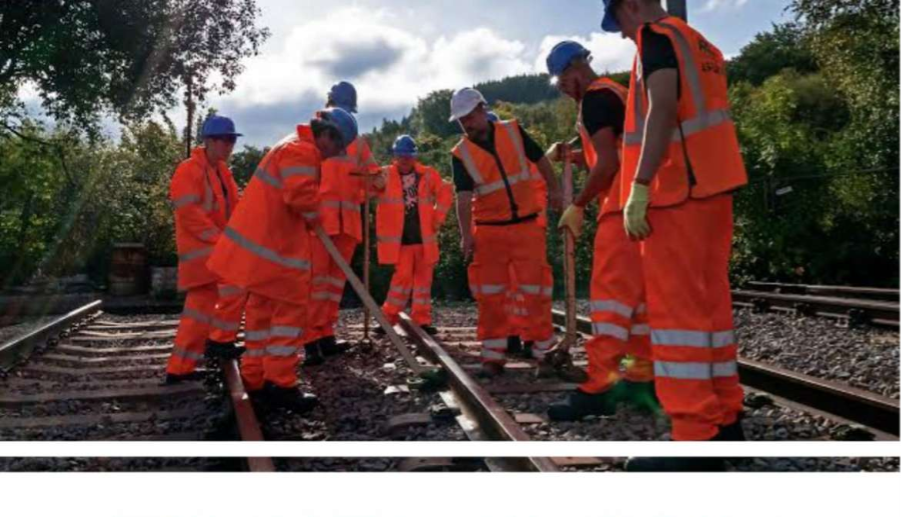Small construction sites often operate with limited staff and resources, yet the risks can be just as serious as on larger projects. Supervisors play a crucial role in ensuring the health and safety of their teams. The Site Supervisor Safety Training Scheme (SSSTS) is designed to equip supervisors with the knowledge and practical tools they need to create safe working environments.
The cost of the SSSTS course is £200 + VAT, making it an affordable investment in safety and leadership.
Understanding the SSSTS training benefits for small sites helps supervisors reduce hazards, meet legal requirements, and build stronger teams.
Why Safety on Small Sites Requires Special Attention
Limited Resources and Oversight
Unlike larger projects, small sites may not always have dedicated health and safety officers. Supervisors are often required to balance multiple responsibilities, including workforce management, scheduling, and hazard monitoring. Without formal training, key risks can go unnoticed.
Common Hazards on Small Sites
Small sites frequently encounter:
- Slips, trips, and falls due to uneven surfaces or cluttered walkways
- Limited access routes for vehicles and pedestrians
- Manual handling injuries caused by lack of lifting aids
- Electrical hazards from temporary setups
- Inadequate protective equipment due to budget constraints
These risks highlight why a trained supervisor is essential in maintaining safe conditions.
What SSSTS Training Covers
The SSSTS course is structured to provide supervisors with the skills to manage both people and risks. Key areas of focus include:
- Legal responsibilities: Understanding health and safety law and employer obligations
- Risk assessments: Identifying and controlling hazards on-site
- Effective communication: Ensuring safety messages reach the entire team
- Toolbox talks: Delivering short, targeted safety sessions for workers
- Behavioural safety: Encouraging safe practices through leadership
For small sites, these skills translate into immediate and practical improvements.
SSSTS Training Benefits for Small Sites
Improved Supervisor Safety Knowledge
Supervisors trained under SSSTS gain the ability to identify hazards early, reducing the chance of accidents. This knowledge ensures supervisors can make informed decisions even when working without a full-time health and safety officer.
Consistent Compliance with SSSTS Requirements
Small sites often face scrutiny from regulators and clients regarding safety compliance. Trained supervisors understand SSSTS requirements, which cover record-keeping, reporting incidents, and demonstrating that risk assessments have been conducted. This makes inspections smoother and reduces the risk of penalties.
Better Control of Small Site Hazards
Supervisors can implement structured controls that address hazards specific to small sites, such as managing confined spaces, organising vehicle access, and ensuring scaffolding is used correctly. By applying systematic methods, hazards are reduced instead of managed informally.
Stronger Team Leadership
One of the often-overlooked aspects of SSSTS is its emphasis on leadership. Supervisors learn how to motivate workers to adopt safe practices without resistance. On small sites, where teams are tight-knit, this can create a culture of accountability that extends beyond compliance.
Enhanced Communication
Small teams benefit from open communication. Supervisors trained in toolbox talks and clear instruction methods ensure every worker understands safety expectations. Miscommunication is reduced, leading to fewer incidents caused by confusion or assumption.
Practical Examples of SSSTS in Action
- Managing Site Traffic
On a small residential build, there may be limited space for delivery vehicles. An SSSTS-trained supervisor can set up a simple traffic management plan, separating pedestrian walkways from delivery routes, reducing the likelihood of collisions. - Tool and Equipment Safety
When tools are shared on small sites, risks of improper use increase. A supervisor trained under SSSTS can introduce short toolbox talks to reinforce safe usage and ensure defective tools are removed quickly. - Emergency Preparedness
Small sites often assume emergencies are unlikely. An SSSTS-trained supervisor knows the importance of planning escape routes, keeping first aid accessible, and ensuring all staff understand emergency signals.
Long-Term Value of SSSTS Training on Small Sites
- Reducing Accident Costs
Accidents, even minor ones, can delay projects and increase costs. Supervisors with SSSTS training create environments where fewer incidents occur, keeping projects on schedule and reducing financial strain. - Building a Reputation for Safety
Small contractors often rely on repeat business. Demonstrating that supervisors are SSSTS trained reassures clients that safety is taken seriously, which can lead to more opportunities. - Supporting Workforce Retention
Workers are more likely to stay with employers who prioritise safety. Supervisors who lead by example create trust and loyalty, which is particularly valuable when skilled labour is limited.
Conclusion
Small sites face unique challenges, from limited space to reduced staffing. Supervisors are the frontline defence against accidents and unsafe practices. By completing SSSTS, supervisors gain the tools to improve compliance, manage hazards effectively, and lead their teams with confidence.
The SSSTS training benefits for small sites are clear: stronger leadership, safer working conditions, and long-term value for both workers and employers.
The course cost is £200 + VAT, representing excellent value for the safety knowledge and leadership skills it delivers.
For more details or to discuss training options, please contact us.
FAQ
What does SSSTS stand for?
SSSTS stands for Site Supervisor Safety Training Scheme. It is a recognised course for supervisors in the construction industry.
How long does the SSSTS course take?
The course typically lasts two days, covering both classroom learning and practical case studies.
Who should take SSSTS training?
It is designed for site supervisors or those preparing to take on supervisory roles, especially on construction projects.
Is SSSTS training only relevant to large sites?
No, SSSTS training benefits small sites significantly by helping supervisors manage hazards with fewer resources and smaller teams.
Does SSSTS training expire?
The certification is valid for five years, after which a refresher course is required.



